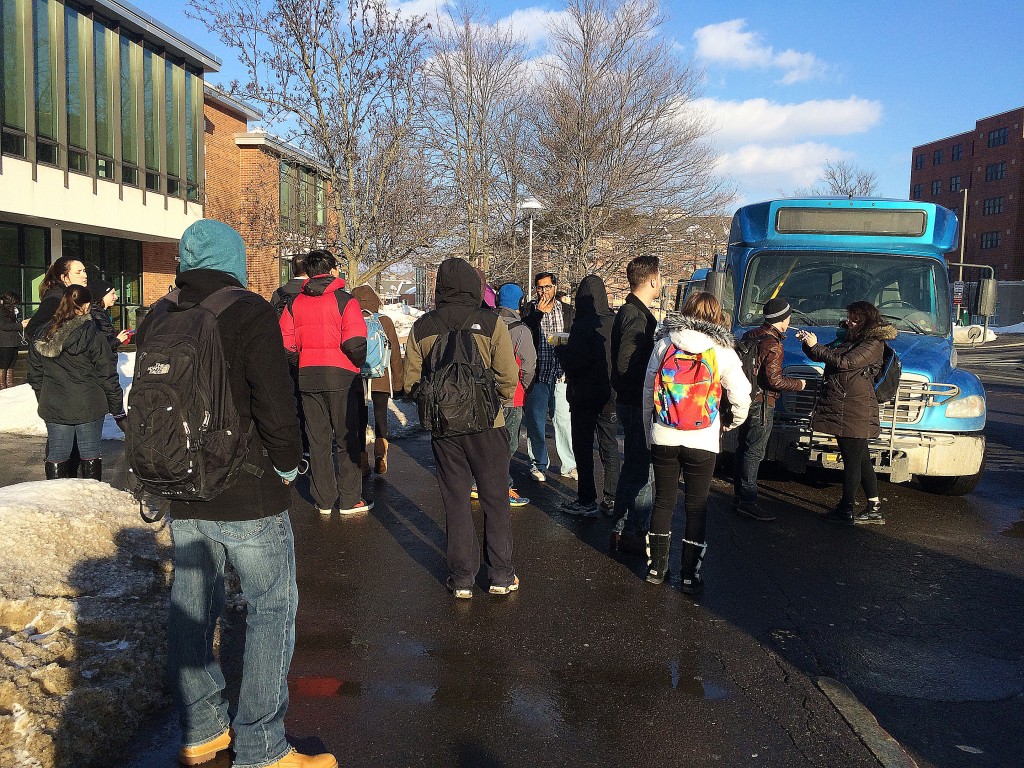
As Binghamton University plans to expand to 20,000 students by the year 2020, Off Campus College Transport (OCCT) also plans to grow to meet the increased demands on its bus service.
Alexander Liu, president of the Student Association (SA) and CEO of OCCT, discussed his plans for expansion in an SA town hall meeting last Wednesday. The changes will increase the size of the OCCT fleet and implement a GPS system on the buses.
OCCT will purchase one additional large bus each year for the next four years, and four smaller shuttle buses. The shuttles will be used exclusively for runs on-campus, which will free up larger buses for off-campus trips.
Though times have not been set yet, OCCT Director Charles Brundza said that the shuttle buses should run every six minutes during peak times and every nine minutes during the rest of the day. Tentatively, peak times will be from 7 a.m. to 10 a.m. and 3 p.m. to 6 p.m. Off-campus trip times have not been decided yet.
Liu said that the buses will not only increase efficiency in service to Downtown and the West Side, but will also allow OCCT to create additional routes. He added that he could not disclose how much each bus would cost because the contracts have not yet been finalized.
According to Brundza, the GPS system will be installed during spring break, and will come with a laser system that counts every passenger who enters and leaves each bus. The mobile app connected to the system, which Liu said he hopes will be ready by next semester, will display bus schedules, the locations of each bus in real time and the amount of students on each vehicle.
James O’Brien, a sophomore majoring in accounting, said that having an app would make OCCT much more user-friendly.
“I always check [the OCCT schedules online], and then I have to download it on my computer and I end up with a billion of those downloads,” O’Brien said. “Having an app for that instead would be pretty great.”
Brundza said that through the GPS system, OCCT will be able to better analyze where students are living off campus, and what routes need increased service.
“We can monitor where we’re picking up people and see where people have moved and lived,” Brundza said. “In the fall we had the West Side increase and had to add a bus to the West Side. With the GPS we can determine where population shifts have happened and how we can better service the community.”
This is not the first time that OCCT has looked into expanding and changing its service, and a swipe-in system has been tried multiple times. Liu said that the reason past attempts failed was because OCCT never sought help from an outside company to help with the changes. ETA Transit, the company that OCCT is purchasing the new system from, has also installed this service to buses at the University of Houston.
“Four years ago or three years ago or two years ago we’ve had swipe system ideas, and all of them have failed,” Liu said. “We’ve learned the hard way that we need to contract it out because there is stability that can make sure that the system can stay active for a long time and be catered to students’ needs.”
Some students, however, remain skeptical of OCCT’s plans regardless of Liu’s assurances.
“I think we’ve all been disappointed a lot in the past,” said Brendan Foehr, a senior majoring in English. “Once the buses start arriving on time, and once it’s clear that the buses are being regularly maintained and inspected, I’ll put my faith back in them.”


